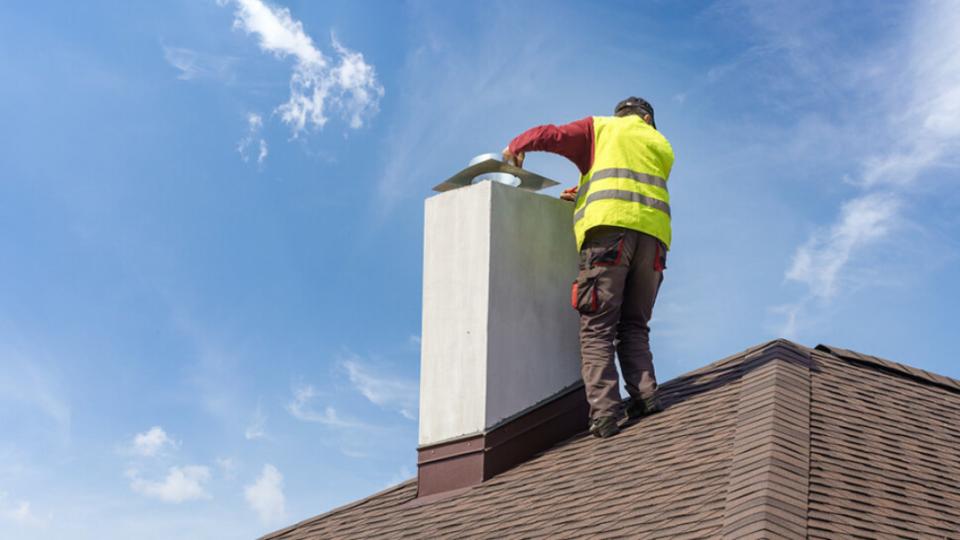As the chilly winter months approach, there's nothing quite as cozy and comforting as gathering around a warm fireplace. However, before you light that first fire, it's essential to prioritize the safety of your home and loved ones. One crucial step in maintaining a safe fireplace is to schedule a professional chimney inspection. In this comprehensive guide, we will explore the importance of chimney inspections, the potential risks associated with neglected chimneys, and how regular inspections can ensure a worry-free winter season.
Understanding the Value of Chimney Inspections
1. Identifying Hidden Hazards: A thorough chimney inspection allows trained professionals to detect and address potential hazards that may have developed over time. Cracks, blockages, or deterioration can go unnoticed to the untrained eye, but a qualified inspector will identify these issues and recommend appropriate actions.
2. Preventing Chimney Fires: Creosote buildup is a common occurrence in chimneys and can lead to dangerous chimney fires if left unaddressed. During an inspection, the inspector will evaluate the level of creosote accumulation and suggest the necessary steps to reduce the risk of a devastating fire.
3 Ensuring Proper Ventilation: Functional chimneys facilitate the release of toxic gases, such as carbon monoxide, ensuring the safety of your household. An inspection confirms the chimney is efficiently venting these harmful gases and helps prevent potential health hazards associated with poor ventilation.
The Chimney Inspection Process: What to Expect
1. Interior Inspection: A chimney inspection begins with examining the interior components of your chimney. This includes assessing the condition of the flue liner, checking for any cracks, obstructions, or signs of excessive creosote buildup. A video camera may be employed to provide a detailed view of hard-to-reach areas.
2. Exterior Examination: Next, the exterior of the chimney is inspected for signs of damage or deterioration. This involves examining the bricks, mortar, flashing, and chimney cap to identify any potential weaknesses that may affect the chimney's structural integrity.
3. Flue Evaluation: The flue is an essential component of the chimney system, responsible for directing smoke and gases outside. During an inspection, the flue's efficiency, size, and condition are assessed to ensure it meets safety standards and performs optimally.
Understanding the Different Levels of Chimney Inspection
1. Level 1 Inspection: This is the most basic and common type of chimney inspection. It involves a visual examination of accessible portions of the chimney, ensuring its structure and connections are sound. Level 1 inspections are recommended for chimneys with no known issues or recent changes.
2. Level 2 Inspection: A Level 2 inspection is more extensive and includes all aspects of a Level 1 inspection, with the addition of video scanning, when necessary. Level 2 inspections are typically conducted when there have been changes to the chimney system, such as a new heating appliance installation, changes in fuel type, or after an event like a chimney fire or earthquake.
3. Level 3 Inspection: Level 3 inspections are the most comprehensive and are necessary when serious hazards are suspected within concealed areas of the chimney or its structure. These inspections may require the removal of specific components to access hidden areas or to perform necessary repairs.
The Importance of Regular Chimney Inspections
1. Ensuring Efficient Fireplace Performance: Regular chimney inspections help maintain the optimal performance of your fireplace by ensuring the chimney system operates as intended. By addressing any issues promptly, you can avoid potential smoke or airflow problems that could impact the overall performance of your heating system.
2. Preventing Costly Repairs: Catching minor issues through routine inspections can prevent more extensive and costly repairs down the line. Detecting and addressing small cracks, deteriorating mortar, or damaged chimney caps early on can save you from expensive restoration work in the future.
3. Extending Chimney Lifespan: A well-maintained chimney is more likely to have a longer lifespan. Regular inspections help detect and resolve issues that could lead to structural problems or system failures, prolonging the life of your chimney and avoiding premature replacement.
4. Complying with Insurance Requirements: Many insurance policies require regular chimney inspections to maintain coverage. Failing to meet these requirements may result in denied claims in the event of a fire or other chimney-related incidents. Stay proactive and meet the necessary standards to ensure your insurance policy remains valid.
The importance of chimney inspections cannot be overstated when it comes to the safety and well-being of your home and loved ones. By prioritizing regular chimney inspections before using your fireplace this winter, you're taking a proactive step towards reducing the risk of chimney fires, carbon monoxide poisoning, and other potential hazards. Remember, professional chimney inspections not only guarantee a safe and efficient fireplace but also provide peace of mind during the colder months. Ensure your home is ready for the winter season by scheduling a thorough chimney inspection with a TrustDALE certified professional and don't forget you're always protected by The TrustDALE $10,000 Make It Right Guarantee™.

